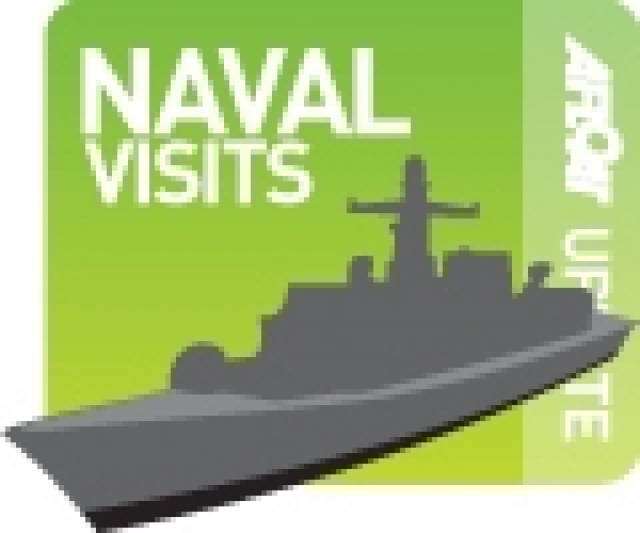#Lusitania100 – USS Anzio (CG68) a United States Navy 'Ticonderoga' class guided missile cruiser is on a visit to Cobh this May Bank Holiday weekend in advance of next Thursday's centenary anniversary of the sinking of RMS Lusitania, writes Jehan Ashmore.
It is understood that the almost 10,000 tons displacement cruiser had recently visited Brest, where the French have a major naval base before heading to Irish waters with yesterday's arrival to Cobh Cruise Terminal.
As previously reported on Afloat.ie, seven German Navy vessels called to Cork Harbour last weekend to restock supplies and give crews some well-earned shore leave. But they're also sure to have reflected on the 100 years since the sinking of the Lusitania by a U-Boat 20 on 7 May 1915 representing a very different Germany in the First World War.
As reported in yesterday's Irish Times, the role that Cobh in particular played in the rescue and recovery of dead passengers from the Cunard liner which was making a voyage from New York bound for Liverpool, would sadly involve the lower Cork Harbour town (then Queenstown) for all the wrong reasons.
In the newspaper feature, Ronan McGreevy writes that the sinking of the Lusitania was not the catalyst for American entry into the first World War. That did not happen for another two years. It was, however, the beginning of the end of US neutrality in the conflict.
As for the present day, the deepwater quay berth in Cobh is otherwise normally used to welcome cruiseships but instead saw more than 400 US Navy crew personnel arrive.
Mariners are advised that during the visit of USS Anzio alongside Cobh, under the Harbour's Act 1996-2009 and the International Ship and Port Security Code (ISPC), an exclusion zone of 50 metres is currently in place around the vessel.
The exclusion zone is been monitored by An Garda Síochána and Naval Service for the duration of the vessel's port stay. USS Anzio is scheduled to depart on Monday morning.































































